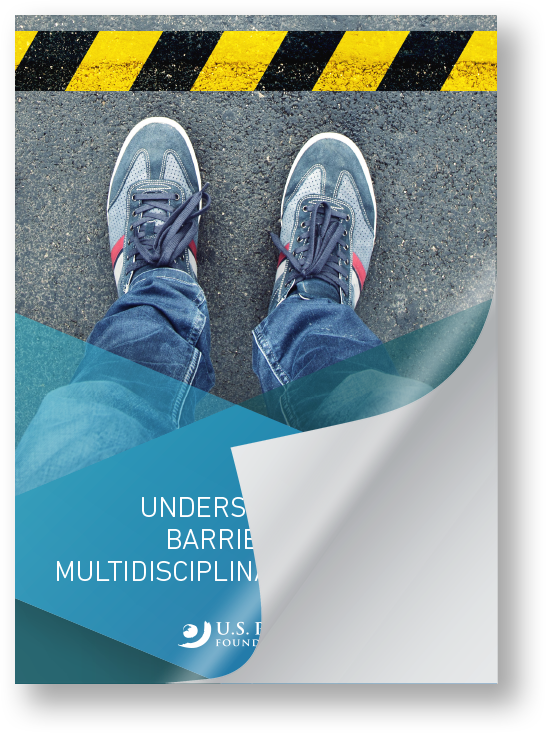Access Survey Report
There is an enormous gap between best practices and the care patients can realistically access.
In August 2020, U.S. Pain Foundation conducted a survey of 1,581 people with pain to better understand barriers to individualized, multidisciplinary care.
Specific barriers explored included cost, insurance coverage and limits, concerns about side effects, a lack of information about options, geographic location, and mobility issues.
The results underscore the enormous gap between best practices in pain management and the pain care that is realistically available to patients.
Key Takeaways
1) THE REALITY ON THE GROUND IS THAT MOST PAIN PATIENTS ARE NOT GETTING ACCESS TO MULTIDISCIPLINARY AND INTEGRATIVE PAIN CARE, THE CARE THAT IS WIDELY VIEWED AS BEST PRACTICE.
More than three-quarters of patients seen at pain clinics/centers said the center only offers pain doctors, not multidisciplinary specialists, like psychologists, nutritionists, physical therapists, etc. (76.5%).
2) COST IS THE BIGGEST BARRIER TO ACCESSING TREATMENTS, WHETHER BECAUSE THERAPIES AREN'T WELL-COVERED, OR ARE COVERED, BUT HAVE HIGH COPAYS OR ANNUAL LIMITS.
More than three-quarters of respondents indicated cost prevented them from accessing one or more treatment options (76.5%). Cost was most commonly a barrier to massage (52.8%) and acupuncture (39%).
Of those with insurance, more than half said high copays prevented them from accessing treatment (51.9%). High copays were most commonly a barrier to physical therapy (26%) and massage (24.4%).
3) TELEHEALTH HAS IMPROVED ACCESS TO CARE FOR LARGE NUMBERS OF PAIN PATIENTS—A SILVER LINING TO THE PANDEMIC.
Slightly more than half (50.7%) said mobility issues—primarily difficulty driving—have prevented them from accessing treatment.
An overwhelming majority of respondents (89.9%) said they would like telehealth to continue beyond COVID-19.
4) THE TOP THERAPY MOST OFTEN USED TO MANAGE PAIN IS HEAT AND COLD THERAPY. THIS IS A HIGHLY EFFECTIVE BUT UNDERAPPRECIATED RESOURCE.
When asked what they currently use to manage pain, 65.7% of respondents chose heat and cold therapy.
When asked what self-management strategies are “somewhat effective” or “effective,” a large majority (77.3%) chose heat and cold therapy.
67.8% use heat at least once a week, and 44.9% use cold at least once a week.
5) PAIN PATIENTS MOST WANT ACCESS TO MASSAGE THERAPY, BUT CONFRONT BARRIERS TO THIS MODALITY, ESPECIALLY IN TERMS OF COST.
When asked which providers they would like to see or see more of, but cannot because of barriers like cost, massage therapists was the top choice of respondents (48.4%), followed by pain physicians (32.9%), and acupuncturists (29%).
A majority (52.8%) of respondents said cost prevented them from accessing massage therapy.
6) BEHAVIORAL HEALTH AND PAIN MUST BE FURTHER ADDRESSED.
26.4% of respondents wished mind-body and behavioral health therapies were emphasized more by their providers.
20.7% of respondents living in rural areas were unable to access support groups due to their geographic location.
19.8% of patients wished they could see, or see more of, a psychologist, psychiatrist, or other mental health professional, but can’t because of barriers like cost
Learn more about the survey results
Download the full report
View an infographic
Read the press release
Coverage of the survey results
- “Taking a personalized approach to pain management” Pulmonary Hypertension News, Sept. 30. Highlights U.S. Pain’s MyPainPlan website and Pain Awareness Month initiative.
- “Multidisciplinary pain care difficult to access, survey says” American Journal of Managed Care, Sept. 19. Highlights results of U.S. Pain’s survey.
- “Pain awareness month campaign highlights gaps in pain care” PR Newswire, Aug. 31. Highlights results of U.S. Pain’s survey.
- Recording of a presentation about the survey results at Alliance to Advance Comprehensive Integrative Pain Management symposium, Sept. 24.
- Results of survey were also shared with NIH’s Back Pain Consortium Research Program Steering Committee on March 1.

